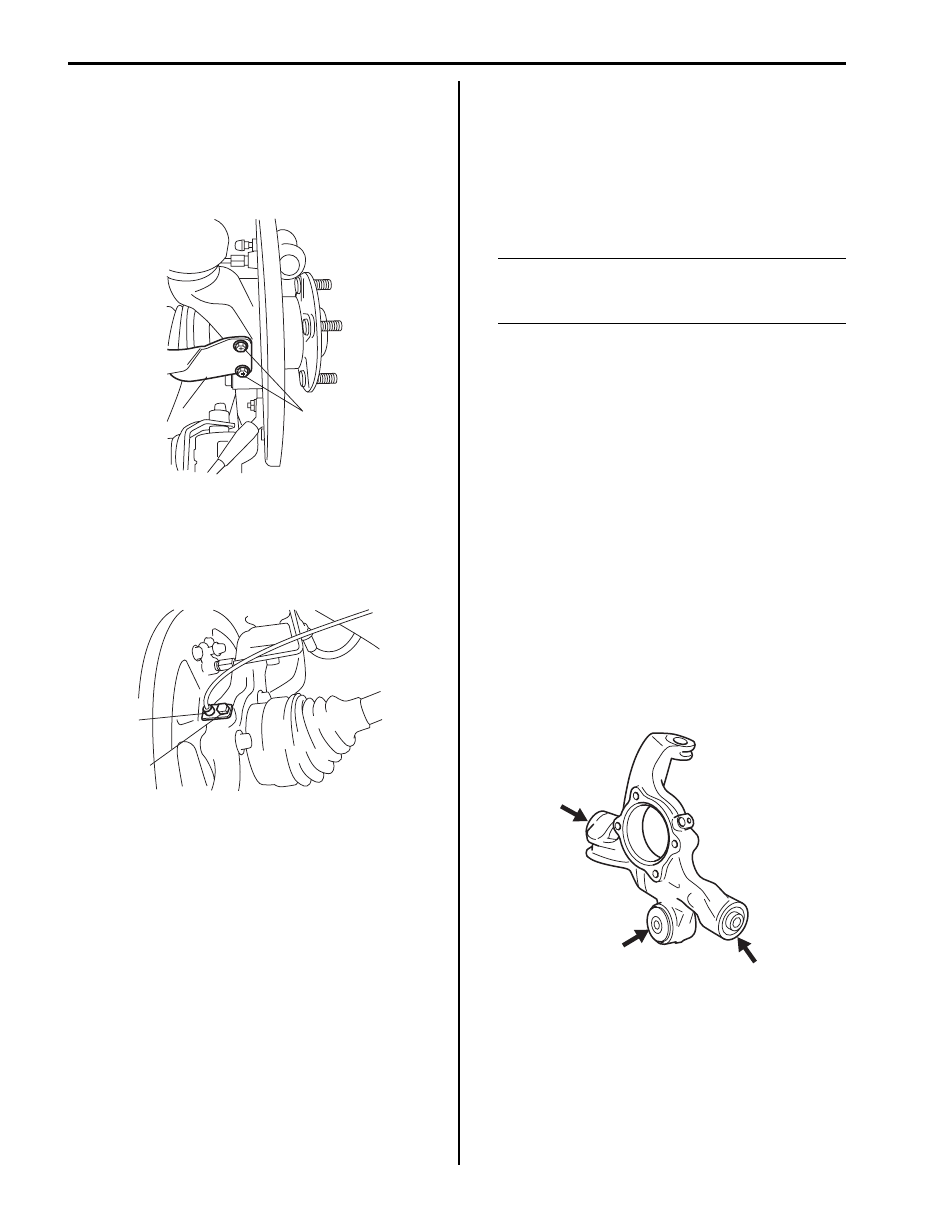Suzuki Grand Vitara JB416 / JB420. Manual - part 156

2C-30 Rear Suspension:
6) Remove floor jack from lower arm.
7) Install rear brake hose bracket (1) and then tighten
rear brake hose bracket bolt (2) to specified torque.
Tightening torque
Rear brake hose bracket bolt (a): 11 N·m (1.1
kgf-m, 8.0 lb-ft)
8) Install ABS wheel sensor (1) (if equipped) and then
tighten wheel sensor bolt (2) to specified torque.
Tightening torque
Wheel sensor bolt (a): 11 N·m (1.1 kgf-m, 8.0 lb-
ft)
9) Install rear wheel hub assembly referring to “Rear
Wheel Hub Assembly Removal and Installation”.
10) Fill reservoir with brake fluid and bleed brake
system. Refer to “Air Bleeding of Brake System in
Section 4A”.
11) Upon completion of all jobs, depress brake pedal
with about 30 kg (66 lbs) load three to five times so
as to obtain proper drum-to-shoe clearance. Adjust
parking brake cable. Refer to “Parking Brake Check
and Adjustment in Section 4D”.
12) Install rear wheels.
13) Check to ensure that brake drum is free from
dragging and proper braking is obtained.
14) Lower hoist and tighten rear wheel bolts to specified
torque.
Tightening torque
Wheel nut: 100 N·m (10.0 kgf-m, 72.5 lb-ft)
15) Bounce vehicle up and down to stabilize suspension.
16) Tighten each bolts to specified torque with vehicle
weight on suspension.
NOTE
It is the most desirable to have vehicle off
hoist and in non-loaded condition when
tightening them.
Tightening torque
Lower arm outer bolt: 135 N·m (13.5 kgf-m, 98.0
lb-ft)
Trailing rod rear bolt: 135 N·m (13.5 kgf-m, 98.0
lb-ft)
Control rod outer bolt: 135 N·m (13.5 kgf-m, 98.0
lb-ft)
17) Perform brake test (foot brake and parking brake).
18) Check each installed part for fluid leakage.
19) Check rear toe and camber adjust it as necessary.
For check and adjustment procedures, refer to “Rear
Wheel Alignment Inspection and Adjustment”.
Rear Suspension Knuckle Check
S5JB0A2306024
• Inspect for cracks, deformation or damage.
• Inspect bushing for damage, wear or breakage. If any
faulty condition is found, replace rear suspension
knuckle assembly.
Rear Suspension Fasteners Check
S5JB0A2306025
Check each bolt and nut fastening suspension parts for
tightness. Tighten loose one, if any, to specified torque
referring to the figure in “Rear Suspension Construction”.
2,(a)
1
I5JB0A230074-01
1
2,(a)
I5JB0A230075-01
I5JB0A230078-01